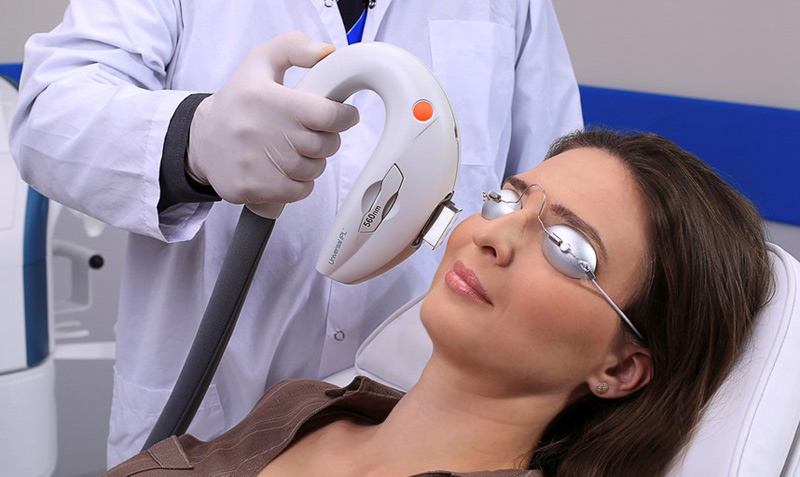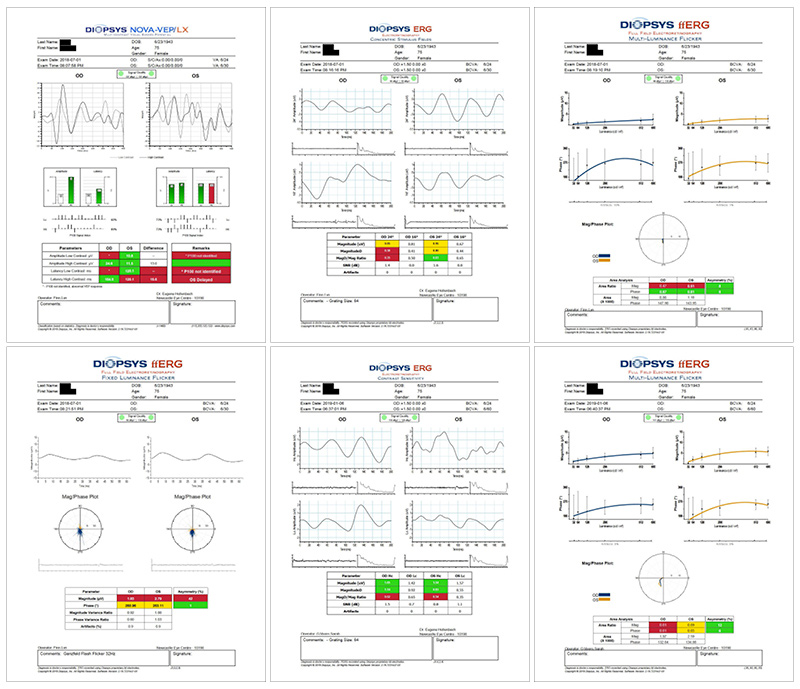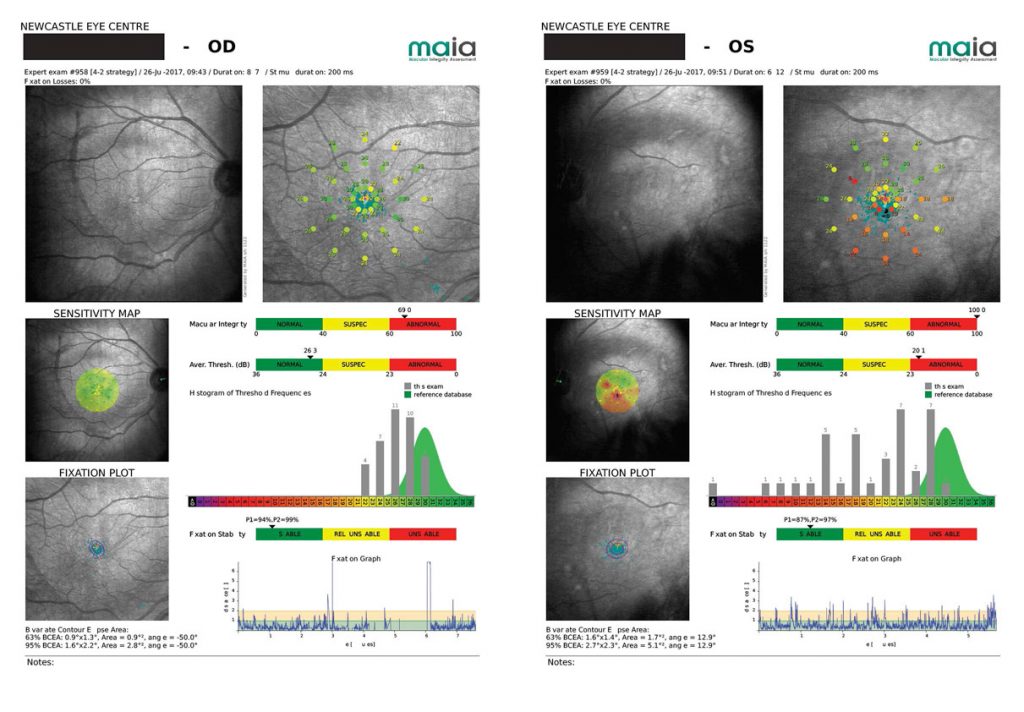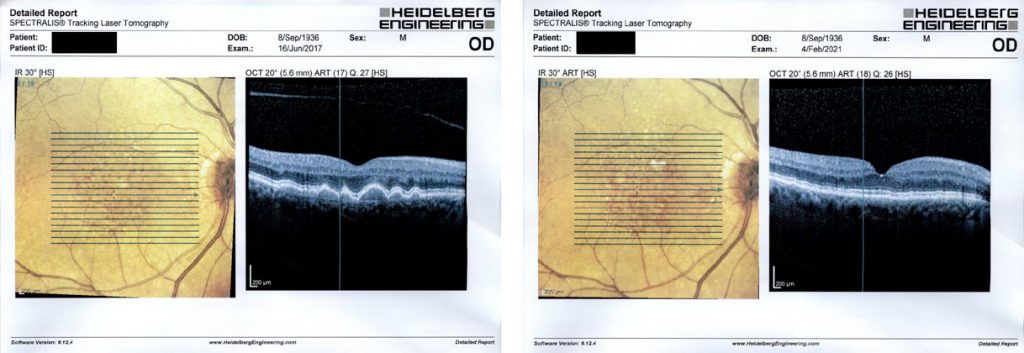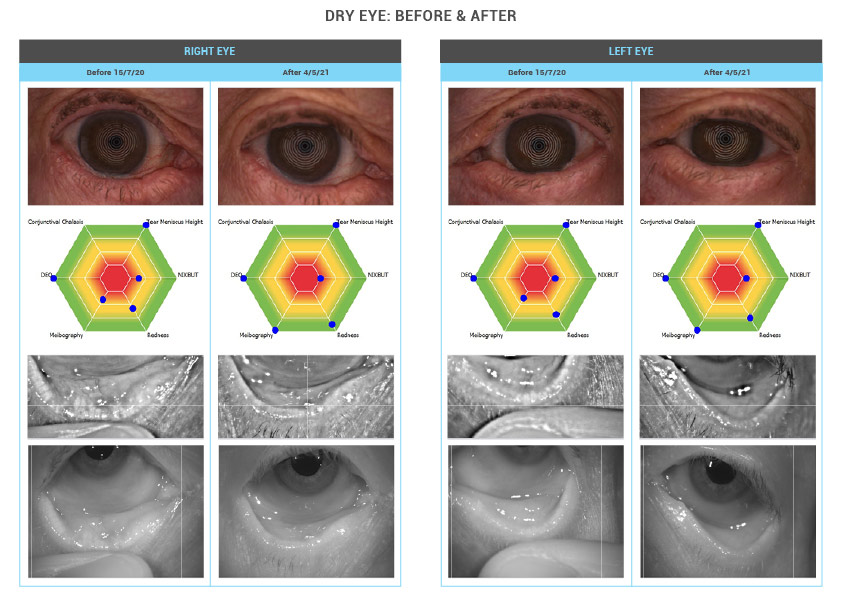Newcastle Eye Centre offers state-of-the-art technologies not found in other ophthalmological practices in the Hunter. We would like to inform you and introduce you to these exciting treatment modalities available to our patients.
We have four areas of specialised diagnostic testing and treatments:
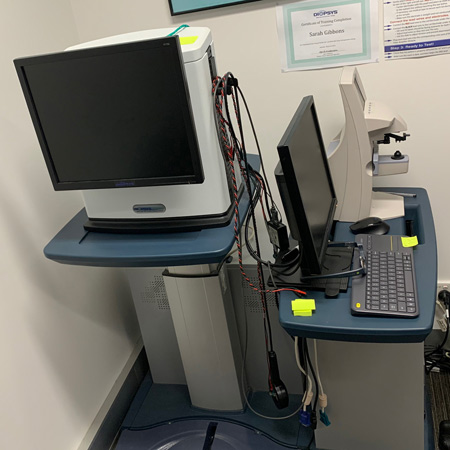
1. Diopsys – Electrophysiology.
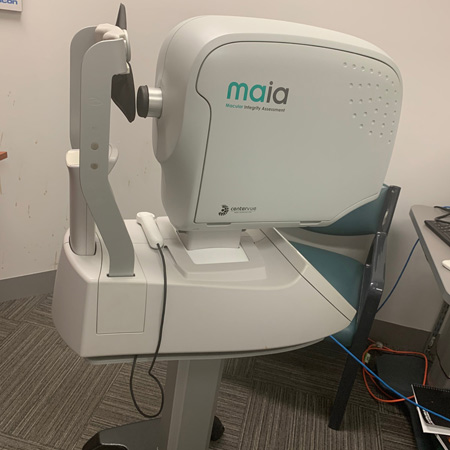
2. Microperimetry using the CentreVue Macular Integrity Assessment (MAIA).
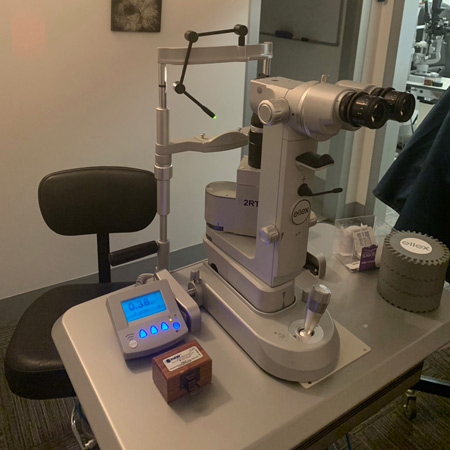
3. Subthermal 2RT laser.
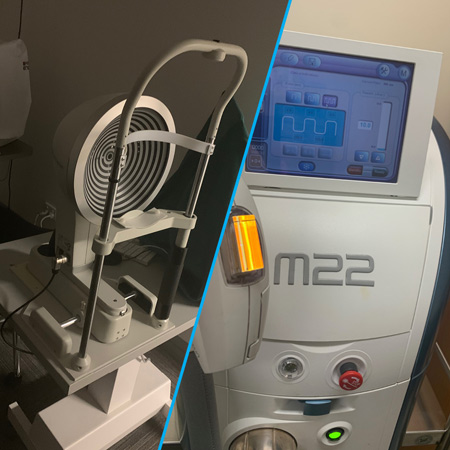
4. Dry eye and Blepharitis/ Meibomian Gland Dysfunction (MGD).
5. Optima IPL treatment of MGD
1. Diopsys – Electrophysiology.
Our Diopsys machine performs Visual Evoked Potential (VEPs) as well as Focal and Pattern Electroretinography (ERG) vision testing. This is electrophysiology made easy.
VEP testing is very important in patients with neuro-ophthalmological conditions such as optic neuritis, other optic neuropathies and visual pathway CVAs.
ERG testing is useful in assessing macular function in patients with macular degeneration, diabetic retinopathy and early glaucoma before there are any peripheral field loss changes or even any nerve fibre loss on OCT scanning. Patients with retinal dystrophies can also be assessed.
These tests are covered by Medicare and although time consuming provide useful information. Previously these tests could only be performed in selected clinics in Sydney.
We welcome you to refer any new patients with optic nerve disease or if there is any suggestion of retinal dystrophy. Patients with early nerve cupping or field loss can also be referred as can patients with maculopathies of unknown origin.
View the Diopsys Brochure:
Diopsys Examples (click images to expand for detailed large images):
2. Microperimetry using the CenterVue Macular Integrity Assessment (MAIA).
These tests are able to objectively measure macular vision in ways that have previously been impossible.
This is a great addition in assessing progression and monitoring macular disease where previously we have only been able to do it with Snellen acuity, near acuity and using the Amsler grid.
MAIA Examples (click images to expand for detailed large images):
3. Subthermal 2RT laser.
2RT laser is a new modality in the treatment of early/intermediate ARMD (in particular macular drusen). It results in effective drusen regression in many patients and there is some evidence that it slows progression of the disease. It is a safe, painless treatment that does not cause any visible retinal scarring.
Subthermal 2RT Laser Treatment is unique Australian designed technology originating in Adelaide and is having wide-spread use in Europe.
We have used 2RT at Newcastle Eye Centre for over 5 years now. We have treated many hundreds of patients using this modality to try to achieve drusen regression and slow down deterioration in macular function and structure. Patients have a yearly treatment and many of patients see a clear regression of drusen.
Before & after examples of regression of drusen (click images to expand for detailed large images):
All our patients over this 5-year period have maintained vision both subjectively and also objectively have not shown any deterioration using either electrophysiology testing using diopsys or microperimetry testing with MAIA.
Furthermore, no patients have gone on to develop choroidal neovascularisation over this period, although we need to be able to follow these patients up for much longer in order to ascertain whether in fact there has been a clear slowing down of the disease process and loss of vision.
View the 2RT brochure for AMD:
2RT laser can also be used to treat leakage in diabetic eye disease as an alternative to thermal laser and can also be used where there is oedema after retinal vein occlusions.
View the 2RT brochure for Diabetic Eye Disease:
Finally, 2RT laser can stop the leak in Central Serous Retinopathy (CSR).
2RT laser does not cause any clinical retinal scarring or bleeding.
4. Dry eye and Blepharitis/ Meibomian Gland Dysfunction (MGD).
Newcastle Eye Centre has been treating patients with dry eyes for some years now with diagnostic tools such as the KG5 Oculus Keratograph which is able to quantify meibomian gland loss and dysfunction via photography, as well as assessing the tear break up time measurably and comparing these tests and subsequent occasions.
This makes Newcastle Eye Centre the only ophthalmology eye clinic in Newcastle to offer unique diagnostic and treatment possibilities for these conditions. A dry eye scan when performed with the KG5 can ascertain whether dry eye is caused by MGD or evaporative dry eye.
View the dry eye brochure (OCULUS Keratograph 5M):
Before & after dry eye treatment (click images to expand for detailed large images):
5. Optima IPL treatment of MGD
If MGD is found to be the cause of dry eye Optima IPL treatment is offered, especially if there is a background of ocular rosacea. Treatments are repeated every month or two, up to 6 treatments. We have a number of very happy patients in whom all manner of eye drops and punctal plugging has been ineffective. It’s important that the right diagnosis is made and that patients with meibomian gland dysfunction have the option of having IPL. Often 3 – 6 treatments are needed in addition to lubricants and other measures to obtain symptomatic relief. This is achieved in most cases.
IPL treatment is not indicated for patients with evaporative dry eye.
